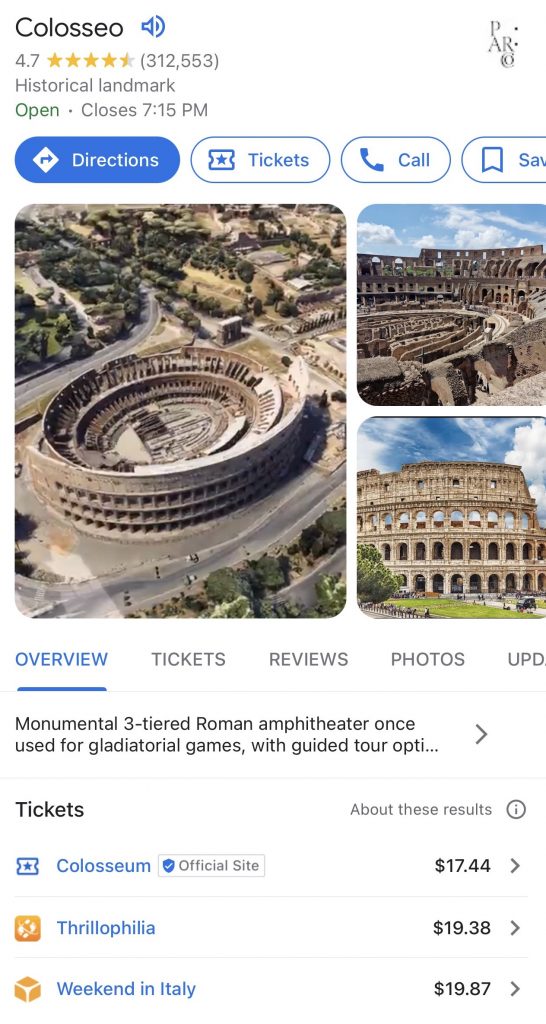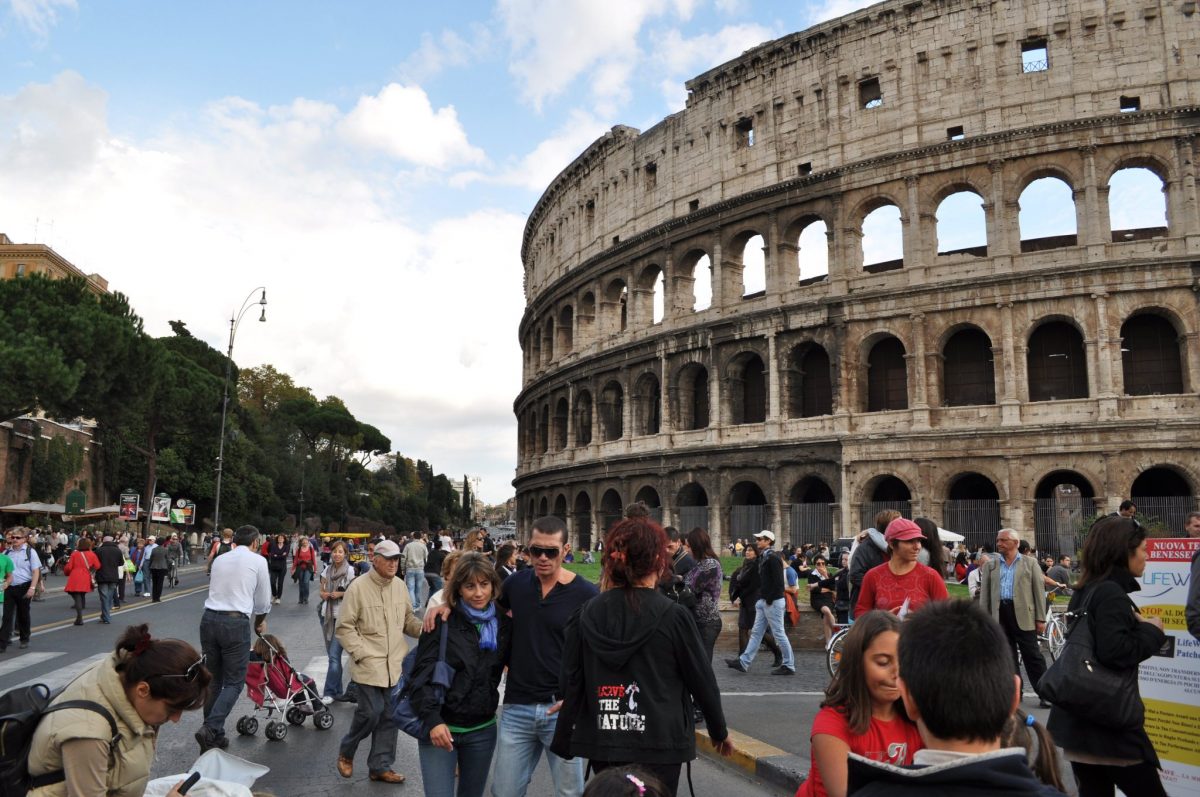Skift Take
When it comes to running mainstream tours to popular attractions, booking sites can't hope to compete with the online user experience that Google provides. Off-the-beaten track activities, though, may be more fruitful.
Google previewed a series of upcoming search features in Google Maps to improve the user experience that could make tours and activities booking sites and operators even more dependent on the search engine when it comes to popular attractions.
Event planners and organizers may also see merit in some of the new search functionalities.
At its Search On 22 event Wednesday, Google unveiled a feature on Google Maps for Android and iOS that displays 250 “photorealistic” aerial videos of landmarks, including the Empire State Building, the Louvre, Tokyo Tower, the Acropolis and the Colosseum, for example.
You can now view in the Google Maps app a 30-second aerial video of the Colosseum — empty of people — that revolves around the landmark. Google Maps users can add photos, get directions, phone the venue, save the attraction for trip-planning purposes, share it, or get information about booking tickets from the landmark’s website or third-party providers.

The booking options included the official website, and nearly two dozen other third-party providers, including Thrillophilia, Headout, and GetYourGuide. As it is doing in its new trains feature in Europe in Google Search, as well as for vacation rentals in the Google Travel portal, Google is not charging these suppliers or operators for booking link clicks, although Google makes money if a company buys an advertisement.
Predictive Views of Landmarks
But another new feature set to launch in the coming months may be even more compelling for travelers and anyone involved in mainstream experiences or the tour operator sector.
Google Maps will debut initially for attractions in Los Angeles, London, New York, San Francisco and Tokyo a feature that would predict the conditions at the site the next day, week or month, for example, Google stated.
“So if you’re visiting San Francisco and want to visit Oracle Park, you’ll have all the information you need to plan your day,” said Chris Phillips, Google vice president and general manager of its Geo unit as part of the announcement. “You’ll be able to see where the parking lots and entrances are and if the weather will be chilly on game day so you can bring a jacket.”
So a tour operator or event planner would be able to use this predictive technology in Google Maps to advise guests or attendees to gather at Lot A/Pier 48 or Lot C at Oracle Park if these locations are expected to be the least crowded or most opportune meeting points in two days or in three weeks, for instance.
Assuming the predictions turn out to be reasonably reliable, operators or meetings organizers couldn’t hope to have the resources to develop these sorts of technologies on their own.
Notice that in this very early stage, Google is focusing these aerial videos and predictive technologies on mainstream attractions — the same ones that sometimes have been the focus of overtourism concerns. So Google is providing potential visitors with new inspiration to visit already overwhelmed landmarks.
Peter Syme, a podcast host and Tourpreneur partner, said if Google makes this technology available to developers it could lead to “better tourism flows around a destination, providing a better customer experience with fewer queues and waiting. Destinations will grasp this as they are desperate to manage the tourism numbers in popular destinations better.”
The new Google Maps features have the potential to “turbocharge” a move toward more self-guided digital tours, which would be “both a threat and an opportunity for tour operators.”
A company such as Airbnb, which prides itself on running less mainstream experiences, such as a host’s culinary tour or cooking lesson, might be less impacted by the Google Maps focus on mainstream attractions than a booking site selling tours of the Vatican, for instance.
Live View of Neighborhood Locations
Google has a couple of other new Google Maps features in the pipeline slated to debut in the next few months.
Among them, users in London, Los Angeles, New York, San Francisco, Paris and Tokyo using iOs and Android would be able to point their phones toward physical coffee shops, supermarkets, transit locations and ATMs to search for information about their business hours or whether they are overflowing with customers or not.
Google will also make available to developers additional information from Google Maps about eco-friendly routes for ridesharing and delivery services, the company said.
Rather than merely searching for restaurants, Google plans to roll out a feature that would enable people to find specific dishes or menu items, the company said.
“In the past, searching for soup dumplings near me would show a list of related restaurants,” said Google’s food General Manager Sophia Lin as part of the announcement. “With our revamped experience, we’ll now show you the exact dish results you’ve been looking for. You can even narrow your search down to spicy dishes if you want a bit of a kick. No more digging through endless menus from different places to see if they have what you’re hungry for.”
All of these new features are geared to move beyond traditional search to make it more intuitive and natural, Google said.
Note: This story has been updated to add comments from Peter Syme.
The Daily Newsletter
Our daily coverage of the global travel industry. Written by editors and analysts from across Skift’s brands.
Have a confidential tip for Skift? Get in touch
Tags: attractions, events, experiences, google, google maps, landmarks, search, technology, tours and activities, user experience
Photo credit: Google Maps will have a feature to predict what the situation will look like at a landmark in the near future. Pictured is the Colosseum in Rome in 2010. Source: Simone Ramella Flickr shorturl.at/gltU5
